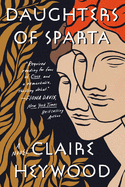
| Publisher: | Dutton | |
| Genre: | Women, Ancient, Fairy Tales, Folk Tales, Legends & Mythology, Fiction, Historical | |
| ISBN: | 9780593184370 | |
| Pub Date: | June 2021 | |
| Price: | $17 |
| Starred | Fiction |
by Claire Heywood
Ancient myths take on new life and humanity in Daughters of Sparta, Claire Heywood's moving debut.
As a young princess, Klytemnestra expected to be her father's heir, that the man she would marry would rule her home kingdom of Sparta after him, and that her beautiful younger sister, Helen, would be sent away to cement an alliance with a foreign king. However, their father's strategy plays out differently, and Klytemnestra is given to King Agamemnon to be the queen of Mycenae, while Helen's husband, Agamemnon's younger brother Menelaus, will have Sparta. Both sisters, even as queens, are meant to be confined to the private lives of their families, but both will reach for more: Helen in her famous abandonment of her home for Troy, and Klytemnestra in her husband's absence during the ensuing war.
Heywood presents a version of these sisters' lives that could have been authentic for Bronze Age Greece. If there are gods, mortals do not knowingly see or interact with them. The focus is tightly on the experiences of these two women. Other familiar faces from the Iliad and classical Greek drama appear, but only as they are relevant to the sisters. The result will feel fresh even to those most familiar with the traditional stories, since events that take center stage in other versions, such as the death of Patroclus, take place outside of these characters' knowledge. Fans of Circe by Madeline Miller and the Avalon series by Marion Zimmer Bradley will be enthralled. --Kristen Allen-Vogel, information services librarian at Dayton Metro Library
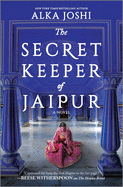
| Publisher: | Mira | |
| Genre: | Women, Cultural Heritage, General, Literary, Fiction, Historical | |
| ISBN: | 9780778331858 | |
| Pub Date: | June 2021 | |
| Price: | $27.99 |
| Fiction |
by Alka Joshi
Readers of Alka Joshi's debut novel, The Henna Artist, fell in love with Malik, the savvy, street-child protégé of Lakshmi, the titular artist who made her living serving the upper-crust women of Jaipur. Joshi's second novel, The Secret Keeper of Jaipur, picks up Malik's and Lakshmi's stories 12 years later, as Malik (now a young man) uncovers some shady dealings at a prestigious construction firm.
Now living in Shimla, Lakshmi is happy tending to an extensive healing garden and helping her husband run his medical clinic. But she has ambitions for Malik, who owes a great deal to his "Auntie-Boss." He travels to Jaipur to apprentice at Singh-Sharma Construction (whose owners have a complicated history with Lakshmi), just as the firm unveils a state-of-the-art cinema. When the theater suffers a collapse on opening night, Malik begins to investigate. Meanwhile, Lakshmi and a new acquaintance of hers in Shimla have stumbled onto a smuggling operation that may have links to the cinema incident.
Joshi's storytelling pulls readers into the colorful, rapidly changing world of 1960s India, where the maharanis still wield their traditional power but the newer forces of money and technology are also at play. Familiar characters and old secrets from The Henna Artist reappear, as Malik and Lakshmi wonder what to do with their new information and how to protect those they love. Joshi's second novel is an engaging story of secrets, betrayal and complicated power dynamics across class, gender and generational lines. --Katie Noah Gibson, blogger at Cakes, Tea and Dreams
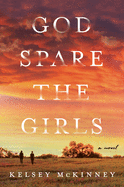
| Publisher: | Morrow | |
| Genre: | Family Life, Literary, Coming of Age, Fiction, Siblings | |
| ISBN: | 9780063020252 | |
| Pub Date: | June 2021 | |
| Price: | $27.99 |
| Fiction |
by Kelsey McKinney
Texas transplant Kelsey McKinney takes on church politics and complicated family dynamics in her powerful first novel, God Spare the Girls. Pastor's daughter Caroline Nolan has mostly been content growing up in the shadow of her adored big sister, Abigail, and their charismatic father, Luke. But as Caroline's high school graduation approaches, she feels a tug toward a different life than the ones mapped out for women in her conservative North Texas town. When the news breaks that Luke has been having an affair--weeks before Abigail's wedding--the girls retreat to their grandmother's ranch to process their father's betrayal and figure out what to do next.
McKinney sensitively portrays the complex bond between the sisters: shiny, perfect Abigail, engaged to a man Caroline secretly suspects is the wrong one, and Caroline, always a little more awkward and less polished, but desperate truly to connect with her sister. As the days tick toward Abigail's wedding, Caroline begins to question many things she has always taken for granted: her father's integrity, the importance of remaining a virgin until marriage, even the notion that type-A Abigail truly has all the answers. The sisters grapple with a number of family secrets (and blazing summer heat) as the church debates whether to reinstate Luke as pastor. Not all of the questions McKinney raises are resolved neatly; rather, the novel's strength lies in its note-perfect depiction of conservative white Bible Belt church culture, and what happens when that culture's image of perfection clashes with reality. --Katie Noah Gibson, blogger at Cakes, Tea and Dreams
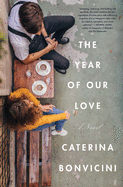
| Publisher: | Other Press | |
| Genre: | Women, Cultural Heritage, Coming of Age, Fiction | |
| ISBN: | 9781635420623 | |
| Pub Date: | June 2021 | |
| Price: | $17.99 |
| Fiction |
by Caterina Bonvicini, trans. by Antony Shugaar
Acclaimed Italian author Caterina Bonvicini delivers a big, bold, all-encompassing novel in The Year of Our Love, a deeply engrossing 40-year love story.
In 1975, two sensitive five-year-olds share a kiss in Bologna, Italy. Olivia is the granddaughter and heir of the Morganti family, who have made their fortune as industrialists. Valerio is the son of the gardener and housekeeper of the estate. They all live on the Morganti property. The kiss between Olivia and Valerio is innocent, yet it seals their fate. Though they don't know it at the time, their lives are forever changed, their hearts entwined, inseparable, though their class and socio-economic backgrounds set them drastically apart.
Through short, perfectly selected and astutely crafted scenes, Bonvicini depicts episodes from the lives of Olivia and Valerio over the next four decades in an Italy where corruption--in both personal lives and the society at large--is endemic. As the years progress through 2013, Olivia and Valerio grow up and go their separate ways. Yet their paths, somehow, keep crossing. Each reunion affirms and deepens their connection as friends, confidantes and passionate lovers. The short-term oasis of each rendezvous forges them into kindred spirits and soul mates.
High drama and moments of great wisdom flesh out themes centered on the perils of upward mobility, appearances for appearance's sake and allegiance to marriage and family. In stunning prose, translated by Antony Shugaar, Bonvicini renders an intricately plotted contemporary Italian epic where the fate of her star-crossed lovers is magnified by the crushing influence of familial and societal forces. --Kathleen Gerard, blogger at Reading Between the Lines
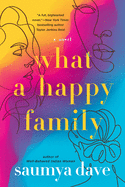
| Publisher: | Berkley | |
| Genre: | Women, Cultural Heritage, Family Life, General, Fiction | |
| ISBN: | 9781984806178 | |
| Pub Date: | June 2021 | |
| Price: | $16 |
| Fiction |
by Saumya Dave
What a Happy Family by Saumya Dave is a tender contemporary drama examining the impact of mental health challenges on a well-to-do Indian American family in Atlanta, Ga.
Twenty-something Natasha is the middle child and black sheep of the Joshi family. While everyone around her is powering forward in their lives, Natasha feels stuck and unhappy. Her brilliant sister is a psychiatrist, as is their father. Her brother occupies the family sweet spot: he's a male child attending a prestigious university. Joshi matriarch Bina harbors high hopes that flighty Natasha will settle down in her job and marry her childhood sweetheart, Karan, the son of Bina's closest friend. Instead, Natasha launches her dream career as a stand-up comic, shocking her parents and the local community of watchful aunties.
As with her debut novel, Well-Behaved Indian Women, Dave is fascinated by the generational dynamics in South Asian diaspora families, where the pressure to succeed can take a toll on members who dare to imagine for themselves a different vision of the future. In sharing the intriguing stories of Natasha's siblings and parents in all their complexity, Dave builds suspenseful subplots that simmer alongside Natasha's slow and devastating unraveling as her fledgling comedy efforts backfire and she feels increasingly isolated from those closest to her.
What a Happy Family is a masterful study of immigrant parents and their American children navigating conflicts within their cultural bubble and outside it. Faced with the ultimate test, the Joshis must confront uncomfortable realities if their fragile family unit is to endure and thrive. --Shahina Piyarali, reviewer

| Publisher: | Putnam | |
| Genre: | Humorous, Mystery & Detective, General, Thrillers, Fiction, Women Sleuths | |
| ISBN: | 9780593191262 | |
| Pub Date: | June 2021 | |
| Price: | $27 |
| Mystery & Thriller |
by Fabian Nicieza
Sure, modern crime fiction has an abundance of idiosyncratic female detectives, but how many of them show up at the murder site in a minivan transporting four children, one of whom urinates all over the crime scene? So begins Fabian Nicieza's ceaselessly funny debut novel, Suburban Dicks, in which characters' wisecracks cushion a painful reckoning with the prejudices running amok in a New Jersey town.
Queens girl-turned-suburbanite Andrea Stern, who is ostentatiously pregnant with her fifth child, isn't looking for drama the morning she rushes into a West Windsor, N.J., gas station; she's looking for a bathroom for her youngest child. Unlike the incompetent cops on the scene, Andrea determines that the killer tried to make the murder of gas station attendant Satkunananthan Sasmal look like a random shooting. Andrea is no stranger to crime solving: she was planning to attend a graduate program with the FBI's Behavioral Analysis Unit when she got pregnant with her first child. The fatal shooting of Sasmal, an immigrant from India, is West Windsor's first murder in more than 30 years, but the town's Asian community has been feeling victimized for ages. Andrea teams up with disgraced local journalist Kenneth Lee in the hunt for the killer.
Suburban Dicks is a well-oiled mystery, throughout which stereotypes fly from the mouths and pollute the minds of even well-meaning characters trying to get to the bottom of Sasmal's murder and the decades-old crime it points to. Nicieza, co-creator of Marvel's Deadpool, has set out to expose prejudice in all its hairy, shattering guises, and in so doing, he never fails to find a laugh where it hurts. --Nell Beram, author and freelance writer
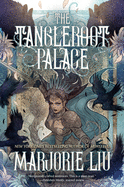
| Publisher: | Tachyon Publications | |
| Genre: | Urban, Fantasy, Apocalyptic & Post-Apocalyptic, Paranormal, Fiction, Science Fiction | |
| ISBN: | 9781616963521 | |
| Pub Date: | June 2021 | |
| Price: | $16.95 |
| Starred | Science Fiction & Fantasy |
by Marjorie Liu
Marjorie Liu gathers six previously published short stories and an original novella in The Tangleroot Palace, a powerful collection of speculative fiction that showcases the talent that's won her several Eisner and Hugo awards. With a range of themes and settings, the stories in The Tangleroot Palace exhibit immersive worldbuilding and emotionally evocative prose, the same style that has made her so successful in her paranormal romance novels and in powerhouse comics like Monstress (with Sana Takeda).
The collection opens with "Sympathy for the Bones," a story best described as creepy, in which a woman just crossing into adulthood murderously breaks free from the woman who has been her savior and captor for most of her life. The book ends with the titular novella, which reads like a fairytale, complete with a dangerous enchanted forest, an unwanted betrothal and an alluring stranger. In between are five stories varying widely in subject, but united by themes and archetypes readers will recognize from Liu's other work. She focuses on people, mostly women, who are morally gray: monsters with good motivations; humans who do monstrous things; women doing whatever they must for freedom and revenge.
Introducing the collection, Liu remarks that her stories are connected by a few common threads, but one lingers long after reading. Writing in the midst of the Covid-19 pandemic, she notes that "hope in the possibility of something good--even the tiniest, most wee little good--is sometimes all we've got." While The Tangleroot Palace is certainly not lighthearted, that thread of hope guides everyone through even the darkest of times. --Suzanne Krohn, editor, Love in Panels

| Publisher: | Harlequin | |
| Genre: | Women, Friendship, Family Life, Romance, Contemporary, General, Fiction | |
| ISBN: | 9781335459893 | |
| Pub Date: | June 2021 | |
| Price: | $16.99 |
| Romance |
by Lori Foster
As in The Somerset Girls, animal rescue is central to The Summer of No Attachments, Lori Foster's tender-hearted romance set again in Sunset, a small community in rural Kentucky. This installment focuses on Ivey Anders, a veterinarian who recently called it quits with her beau. Ivey is assisted at the vet clinic by Hope Mage, a good friend and dedicated worker who has sworn off men because of a disturbing incident that occurred several years before.
Ivey and Hope tend to an abandoned dog with a broken leg and soon discover the dog is pregnant. After the birth of the pups, Hope looks into renting a new apartment in town, roping in Ivey to offer her opinion of the place. There, Ivey meets the landlord, Corbin Meyer, a single businessman. Corbin has just learned he's father to a troubled 10-year-old boy, Justin. The child was dumped into Corbin's life by Justin's drug- and alcohol-addicted mother.
When the boy meets Ivey, the two instantly hit it off, discovering they share a love of animals and horror movies. Their connection bonds them--and Ivey and Corbin. As father and son get to know and fall in love with romantically reluctant Ivey, Hope meets Corbin's brother, Lang, who is smitten with Hope, but finds he must walk on eggshells in order to woo her wounded heart.
Foster's feel-good, small-town romance weaves in well-plotted story threads and complications that expose how scars from the past, if healed, can unlock more hopeful, brighter futures. --Kathleen Gerard, blogger at Reading Between the Lines
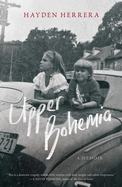
| Publisher: | Simon & Schuster | |
| Genre: | Biography & Autobiography, Family & Relationships, Personal Memoirs, General, Dysfunctional Families, Cultural, Ethnic & Regional | |
| ISBN: | 9781982105280 | |
| Pub Date: | June 2021 | |
| Price: | $26 |
| Biography & Memoir |
by Hayden Herrera
"Our mother was a terrible mother, wasn't she?" is a question that art historian and biographer Hayden Herrera (Arshile Gorky: His Life and Work) poses at the beginning of her frank and fearless memoir, Upper Bohemia.
Herrera and her sister, Blair, were born to Elizabeth and John Phillips, beautiful patricians with impeccable bloodlines and family wealth--although after the onset of the Great Depression there was never enough money. Still, there was the house in Cape Cod built on 800 inherited acres, with Edmund Wilson and Mary McCarthy as neighbors. There was the Manhattan apartment tended by a housemaid. But money was irrelevant. What mattered was art, freedom, love and the company of writers and artists whom Hayden's mother called "upper bohemians."
With their stunning good looks and good family backgrounds, Hayden's parents had "the gift of confidence." They saw themselves as artists, unconfined by convention or their children. After their parents divorced, Hayden and Blair became small nomads, bouncing between caregivers and their parents' impermanent households. The sisters learned to live in a state of unanticipated change, rocketing between the East Coast and Mexico.
"But our terrible mother gave Blair and me a wonderful life," Herrera insists. It's true that this life has led to a wonderful book. Herrera tells the story of her childhood through the voice of a child, never deviating from that point of view. She presents a social history of midcentury privilege and the history of two feckless parents who "believed in the importance of pleasure," in a narrative that is both detailed and riveting. --Janet Brown, author and former bookseller
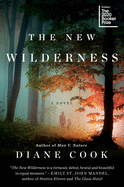
| Publisher: | Harper Perennial | |
| Genre: | Dystopian, Family Life, General, Literary, Fiction | |
| ISBN: | 9780062333148 | |
| Pub Date: | June 2021 | |
| Price: | $17 |
| Now in Paperback |
by Diane Cook
In this shattering work of dystopian fiction, love and survival intertwine until neither is recognizable from the other. The New Wilderness, the Booker Prize-longlisted novel by author and former This American Life producer Diane Cook, takes a refreshingly raw spin on an age-old climate disaster story: the earth has all but been destroyed by industrialization.
Most of the population live in the polluted City, where the air is so poisonous to children that childbirth is discouraged. But a lucky few have been selected for an experimental foray into the Wilderness State, the last enormous parcel of protected land, where the flora and fauna are wild and real. Bea is an interior designer in the City, where her daughter, Agnes, is dying; she keeps coughing up blood. Desperate, Bea and her husband, Glen, are first in line to take Agnes into the Wilderness State with a group of other Community members, where they hope the clean air will save Agnes's life. In return, they'll survive--and check in regularly at Posts for data collection. But, of course, simply living in the Wilderness State is a brutal, beautiful journey, and it challenges everything Bea and Agnes know about their love for each other.
Cook's writing is both a melodic ode to nature and a devastating eulogy to what has been lost, both in the real world and her fictional one. As Agnes becomes wilder, so does her mother, and their diverging natures soon bring them to a crossroads. This is a gorgeous tale of motherhood and the will to live. --Lauren Puckett, freelance writer
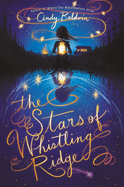
| Publisher: | Quill Tree/HarperCollins | |
| Genre: | Emotions & Feelings, Fantasy & Magic, Adolescence & Coming of Age, Social Themes, Juvenile Fiction | |
| ISBN: | 9780063006416 | |
| Pub Date: | June 2021 | |
| Price: | $16.99 |
| Starred | Children's & Young Adult |
by Cindy Baldwin
Twelve-year old Ivy Mae Bloom wants a real home and, since her Mama can give wishes, she doesn't think it should be such a tough request. The Stars of Whistling Ridge is the inventive, magical tale of three sisters--and three more sisters--whose lives are run by the power of wishes.
Ivy's Mama is a "fallen star-woman," duty-bound to "tend to the magic that wove underneath the world." Mama and her sisters, Agatha and Ruth, keep the magic going in the U.S., while other star-women protect elsewhere. Ivy and Mama, together with Ivy's father and her two younger sisters, Elena and Sophie, travel the country in an old Winnebago (named Martha) while Mama barters wishes and heals places where magic is weak. When the family finds themselves stranded with Mama's star-sisters in Whistling Ridge, N.C. (the place they had "first fallen to earth"), Ivy hopes her wish for an actual home is coming true. But something is seeping the magic out of Whistling Ridge, endangering the town and all the world around it.
The Stars of Whistling Ridge, the third middle-grade novel by Cindy Baldwin (Where the Watermelons Grow), is a refreshing breath of familiar magic. Baldwin has created a fantastic mythology around fallen stars, fireflies and the stardust of which we are all made, all of it growing from the idea that wishing on stars may have been happening "for as long as anybody could remember." By weaving together magic and science, Baldwin dares to ask how certain we are that magic isn't real. Complex issues of family, impending puberty and what home really means are handled deftly in thought-provoking ways. The Stars of Whistling Ridge inspires readers to see the extraordinary in everyday life. --Kyla Paterno, freelance reviewer
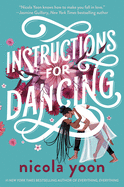
| Publisher: | Delacorte | |
| Genre: | Emotions & Feelings, Romance, Contemporary, Social Themes, Young Adult Fiction, New Experience | |
| ISBN: | 9781524718961 | |
| Pub Date: | June 2021 | |
| Price: | $19.99 |
| Children's & Young Adult |
by Nicola Yoon
In her deeply bittersweet third YA novel, Nicola Yoon (The Sun Is Also a Star) sweeps readers into a heady world of romance, magic and ballroom dance set against the chill, beachy backdrop of Los Angeles.
Black high school senior Yvette "Evie" Thomas lost her faith in love six months ago when her father left her mother for another woman. When she donates her once-cherished romance novel collection to a Little Free Library with a mysterious keeper, Evie gains a strange power: any time she sees a couple kiss, she has a vision of the beginning and end of their relationship. The keeper also gives her a book, Instructions for Dancing, that leads her to La Brea Dance, where she meets X, the gorgeous 18-year-old Black grandson of the studio owners. The teens enter a ballroom dance competition at the behest of their instructor, Fifi, an "exploding firecracker in human form." The two fall for each other but Evie, who knows "heartbreak = love + time," must decide whether the rewards of love outweigh the risk.
Fantasy and romance meet realism as Yoon combines whimsical elements with a thoughtful excavation of how relationships evolve and inevitably end, plus a nuanced, sensitive look at parental infidelity. Ballroom dance scenes, Evie's visions and X's blue-dipped dreads all create a vibrant, cinematic feel, with beach bonfires and L.A. landmarks grounding the setting. Simmering dance numbers, maturity and a high swoon factor make this showstopper anything but routine. --Jaclyn Fulwood, youth services manager at Main Branch, Dayton Metro Library